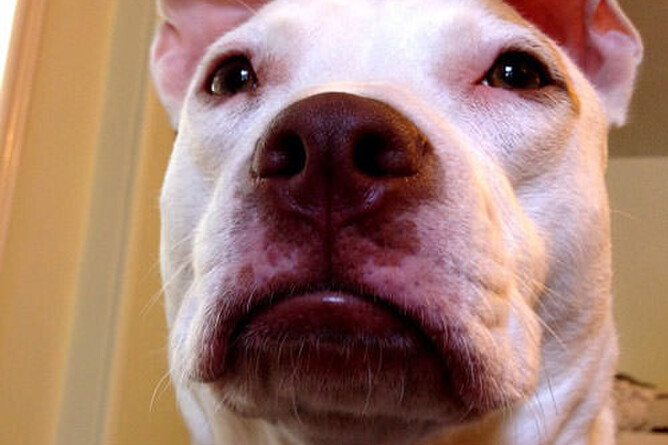Make sure your dog is just all bark and no bite!
Dogs, much like people, often exhibit physical behaviours when they are feeling an emotion.
While we can generally pick up and understand most human behaviours, when it comes to our furry best friends, it’s not always so easy. We sometimes mistake “stressed’ signals for tired or happy ones.
Photo courtesy of Steven L Johnson
If we don’t learn to read their signals correctly, particularly those that warn us about negative behaviours that will follow, we may find ourselves in a negative situation.
To help our pups be model citizens, we need to learn how to breakdown their dog behaviour. Meaning we need to watch out for their “tell-tale” body language.
What are the signs of negative dog behaviour?
Rover offers an amusing and detailed breakdown of deciphering the behaviour of a dog. Below is a summary of behaviours and situations you may find with a nervous dog. Or as we say, “watch out for the 3 S’s” with your dog.
Shyness
Like a lot of people, dogs become shy when meeting new people.
When a dog’s ears are backwards and flat against their head, this means they are shy and uncomfortable. Especially if your pup is shrinking down to the ground in an effort to become small.
If it seems like your dog is not comfortable, then something has to be done to make the situation more relaxed and pleasant for them.
To combat this, kneel to the ground. Keep your back straight. Hold out your hand while keeping your arm still. This offers the dog an opportunity to comfortably learn your scent from a little farther away. Avoid reaching over the dog’s head.
If the dog is comfortable with you trying to pet them, pat their back instead of their head.
Stressed out
When you see someone fidgeting about, rubbing their sweaty palms and/or listen to them talking a million miles per minute, you can be pretty certain the person is nervous and stressed out.
So what are the doggy versions of this emotion?
- A yawn
- A lick of the lips
- Slow blinking
If you notice any or all of these signals occurring regularly, try walking your dog more often or using a bit of calming aromatherapy. Your pup needs to release stress.
Stalking
This might look like your dog is playing, but your dog’s body and tail will become stiff as their eyes widen, concentrated on an object or maybe an animal. Your dog’s head and neck will be level with the rest of the body, ears pricked forward and legs bent.
Stalking usually occurs in groups due to pack mentality. And when it comes to packs, sometimes dogs might be stalking the same target … which can lead to fights! Make sure to keep an eye out when there’s a group of off-leash dogs together.
Uh oh … my dog keeps showing these signs. What do I do?
If the behaviour continues regularly, make sure to take your puppy to your local vet for a full checkup to make sure their behaviour isn’t stemming from a physical problem.
If your pup is healthy, contact a professional reward-based trainer or applied animal behaviorist to assist you. He or she will evaluate your puppy and come up with a plan to correct behavioral issues.
In the meantime, keep your pup away from their triggers.
For example, if your dog gets nervous around children, don’t take your dog to a bbq or party where there may be kids running around. While you might want your dog there, you are risking a serious incident.
Any situation that causes your dog to become increasingly nervous or agitated needs to be addressed by a professional. In most cases, there will be a solution that will help you and your dog move forward.
Would you like more information on finding a dog trainer? Or do you need a supply of positive reinforcement treats? Please feel free to give us a bell 09 448 2227; we are more than happy to help.

